Behind the Scenes at the Franklin Park Zoo
Think you know what goes on at the Franklin Park Zoo? Well, think again, our giraffe-loving friends. On the eve of a brand-new exhibit opening, we go behind the scenes with the real MVPs who make all of those Insta pics possible.

Photo by Michael Prince
It’s a warm spring day at the Franklin Park Zoo, and everyone—animals and people alike—is basking in the late-afternoon sun. Finally poking their heads out from their winterized barn, three Masai giraffes strut around their enclosure, eagerly nibbling mulberry browse out of a zookeeper’s hand. A two-year-old red panda scampers about during an enrichment session. The grounds crew bustle in and out of Gorilla Grove, putting the finishing touches on the brand-new outdoor primate habitat. And there’s a palpable energy in the air as Franklin Park and its sister facility, the Stone Zoo, ready themselves for another record-breaking spring and summer season: Between the two locations, Zoo New England welcomed 1.1 million visitors in 2021, and saw membership grow by 60 percent in just one year.
Managing the flow of people who stroll the grounds each day, of course, is just one facet of what it takes to operate the 72-acre Franklin Park space. “It’s almost like a small city,” says John Linehan, the zoo’s president and CEO. There’s more than 500 pounds of food to be prepared in the commissary kitchen every day; landscaping and gardening to be done (all of that grass in the giraffe savannah doesn’t cut itself); and essential medical care to be administered in the on-site animal hospital. But the heart of it all, according to Linehan, is the zookeepers: “We have people who have dedicated their lives to [the animals] and developed real relationships with them. It’s based on trust.”
Families dropping by on a sunny afternoon don’t notice any of that, of course. They just get to observe and connect with animals they can’t see anywhere else. And that’s exactly how Linehan and the staff want it. “One thing about the zoo is that we care deeply,” says Linehan, who notes that the organization also does plenty of important conservation work off site, from enlisting kids to raise turtles in local classrooms to engaging rangers to protect gorillas in Nigeria. “We don’t have the animals so that people can be entertained. We want them to come away with an appreciation and heightened empathy.”
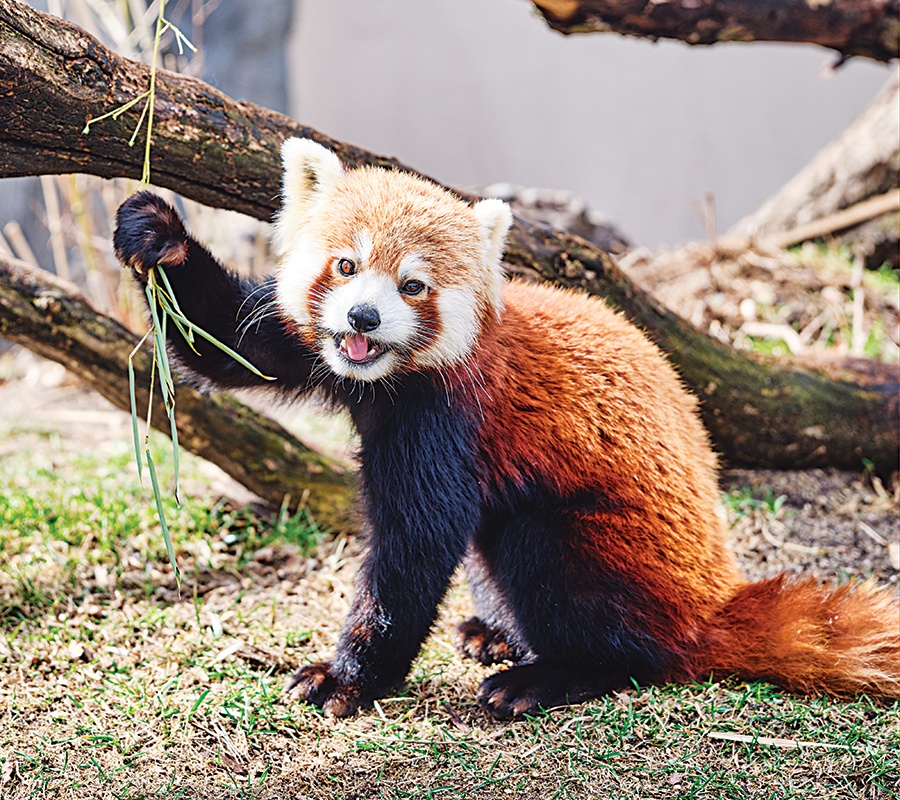
Photo by Michael Prince
Two-year-old red panda Gimli takes a break from a training session.

Photo by Michael Prince
John Linehan (right) and chief operating officer Bob Chabot take stock of the museum’s newest exhibit, Gorilla Grove, before the primates make themselves at home.
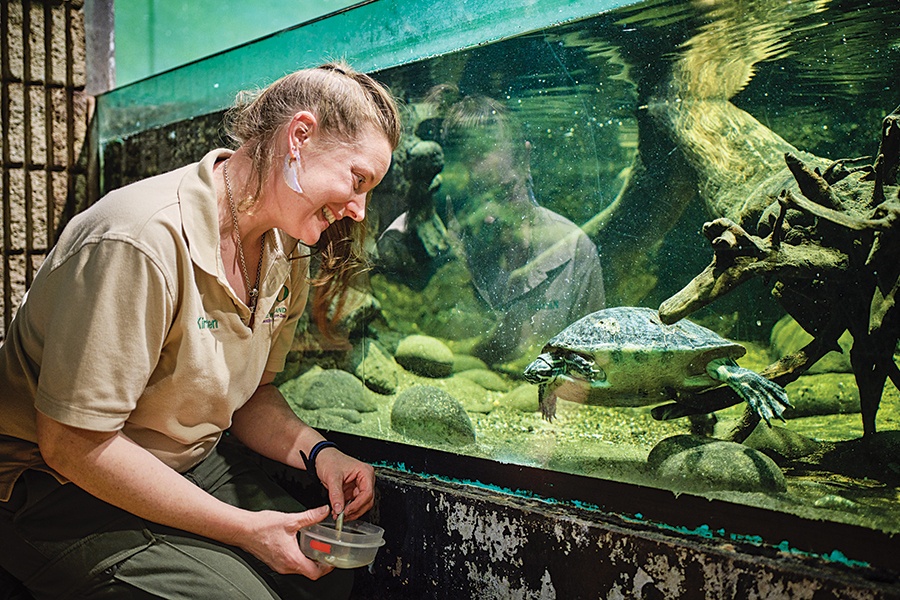
Photo by Michael Prince
Senior zookeeper Kirsten Everett gets ready to offer a fish to Eve, a 50-year-old common cooter (she has to hand-feed Eve, or the ducks in the habitat will steal her food).

Photo by Michael Prince
Maxine, a two-toed sloth, digs into some greens on her hanging feeding platform.
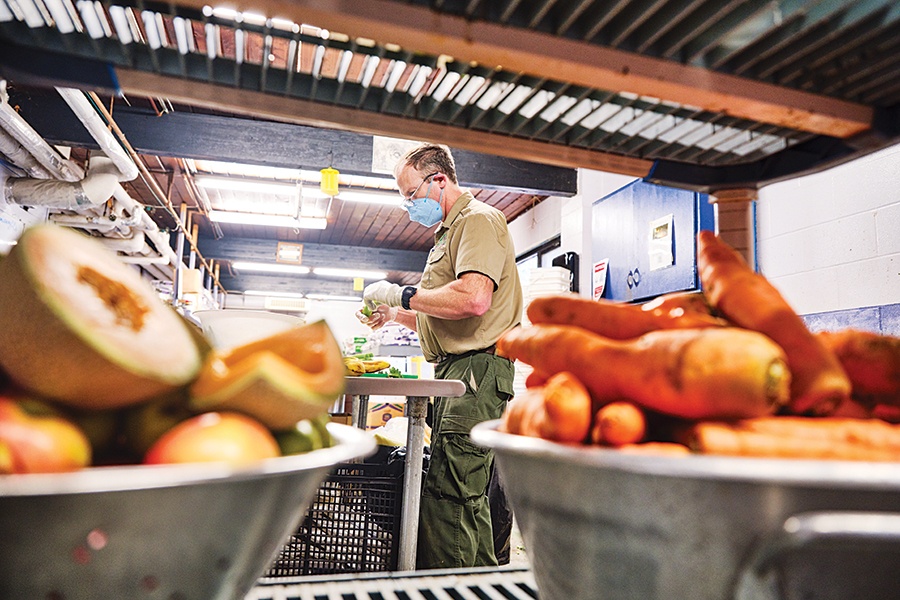
Photo by Michael Prince
Senior commissary keeper John Schaechter preps food for a family of De Brazza’s monkeys.
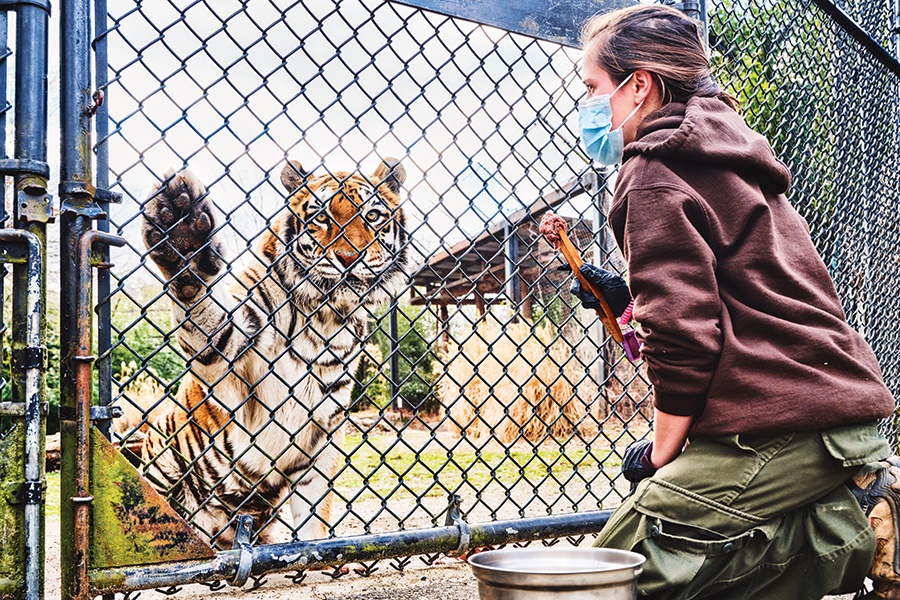
Photo by Michael Prince
Senior zookeeper Nicole Hellmuth checks the paw of Anala, a 17-year-old female tiger, while offering a treat. Training sessions like these allow the care team to administer vaccines, draw blood, and monitor Anala’s overall health.
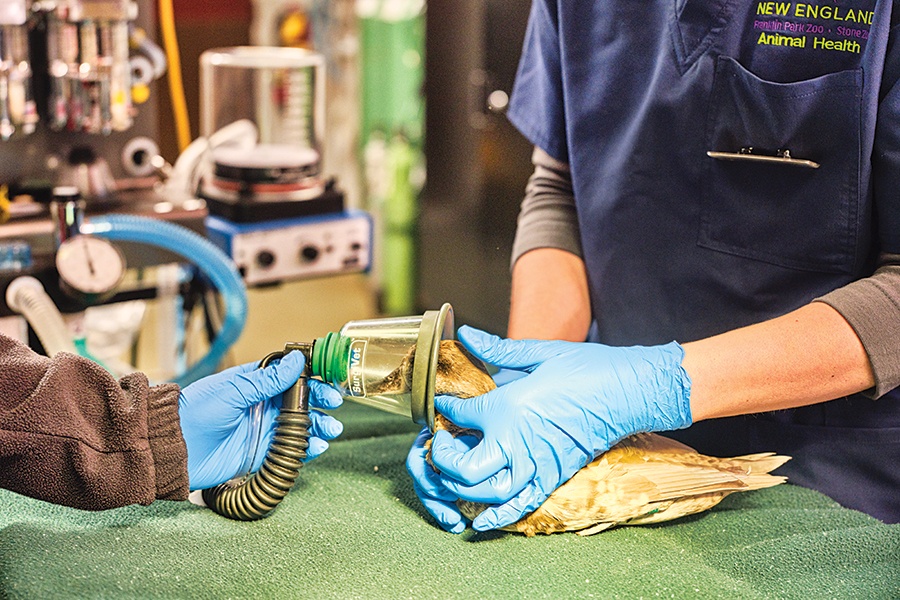
Photo by Michael Prince
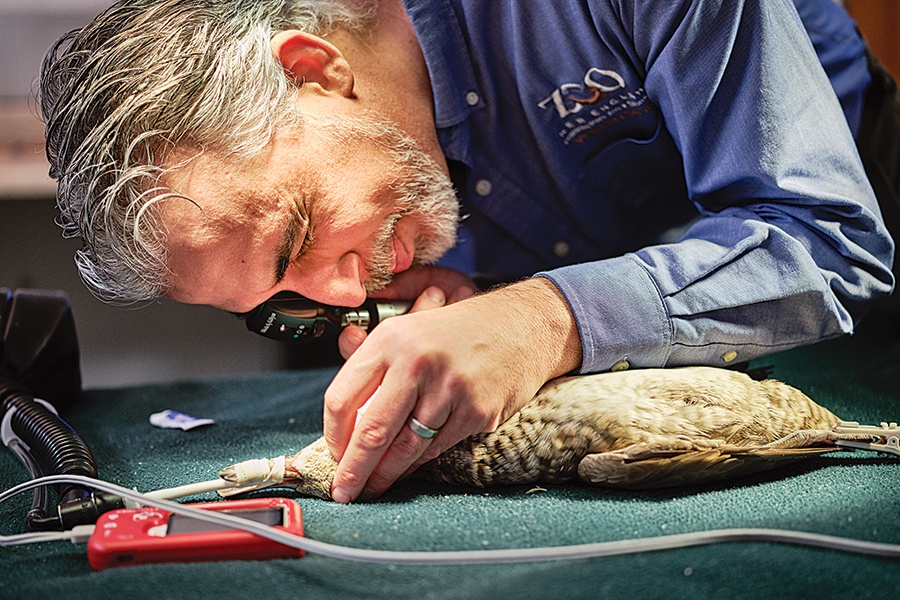
Photo by Michael Prince
Dr. Eric Baitchman examines a marble teal with an assist from vet tech Jess Honeywell at the on-site hospital.

Photo by Michael Prince

Photo by Michael Prince
The animal was put under anesthesia so the team could take radiographs and determine the cause of her limp.

Photo by Michael Prince

Photo by Michael Prince / Photo by Michael Prince
A hadada ibis and ring-tailed lemur hang out inside the zoo’s Tropical Forest building.


